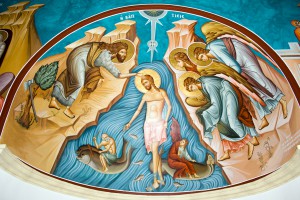This week my husband Bob takes over The Holy Rover, posting a series of reflections on the Gospel of Thomas, one of the non-canonical gospels discovered near Nag Hammadi, Egypt, in 1945:
I’ve been studying the Gospel of Thomas
for Lent. This exercise has turned out to be far more demanding, but also far more rewarding, than I had anticipated. When I talked to Lori about what I was reading, she suggested I tell you about it as well. I hope you might be interested in some of my ruminations on this mystical text, for I believe you will find this “gospel” to be provocative, in the best sense, both intellectually and spiritually.
Some scholars categorize the Gospel of Thomas as a gnostic gospel, which means it contains a heretical theology (Manichaeism) that says matter is evil and only spirit is good, and that it claims esoteric knowledge (gnosis is the Greek word for knowledge). As you will see, Thomas is guilty of a version of the second part of this heresy but not the first. The dualism that views matter as evil came from a version of Greek metaphysics and was an attempt to solve the problem of evil. It resulted in a convoluted set of speculations about the creation and workings of the universe that have no basis in, and are theologically contradictory to, canonical Jewish or Christian texts.
Other scholars claim that Thomas simply carries on the Jewish tradition of wisdom sayings such as those found in Proverbs. Thomas does that, but it does much more. Contemporary mystic Andrew Harvey believes that “The Gospel of Thomas offers a naked and dazzlingly subversive representation of Jesus’ defining and most radical discovery: that the living Kingdom of God burns in us and surrounds us in the glory at all moments.”
Having spent most of Lent working my way slowly through Thomas, I am increasingly certain Harvey is right. In the next few days I am going to attempt to describe the vision of the Kingdom of God that is revealed in Thomas, as this gospel is focused nearly entirely on revealing a unique vision of this key Christian belief.
I have been reading an excellent annotated version of the Gospel of Thomas by Stevan Davies. I recommend you not tackle Thomas without the help of a guide like Davies, for this story contains virtually no narrative. Instead, it is a compilation of sayings attributed to Jesus, ones that many Biblical scholars believe are consistent with the teachings of Jesus, even though scholars disagree when Thomas was written (likely the first or second century). Some of the 114 short entries are similar to Zen koans in that Jesus attempts to help his listeners comprehend his vision through paradoxes and poetic metaphors.
It’s understandable that we, 2000 years later, might need a guide, but the question remains of why Jesus’ disciples are so clueless in the text. It may be helpful to look to the work of Ken Wilber, a contemporary scholar of spiritual consciousness, to find an answer. Wilber has created a “map” of spiritual development that describes the various levels that people progress through. He contends that there have been a few people who are spiritually mature or enlightened throughout history, and he is also optimistic that anyone can mature spiritually. However, most people today, as in the past, only manage to reach level eight or nine of Wilber’s thirteen levels.
One way to comprehend why Thomas’s Jesus has such a hard time getting those closest to him to understand what he is saying is because his disciples have not developed the capacities necessary to comprehend and experience what he is revealing to them. Thus he speaks in riddles in an attempt to move them to a higher level. In taking on this challenging Lenten discipline I hoped that meditating on Thomas might spur my own lagging spiritual growth to the next level.









